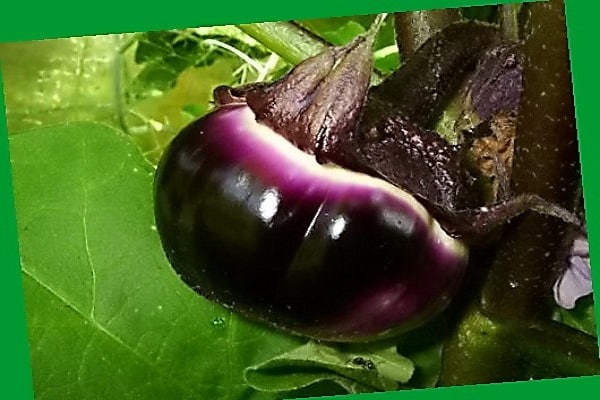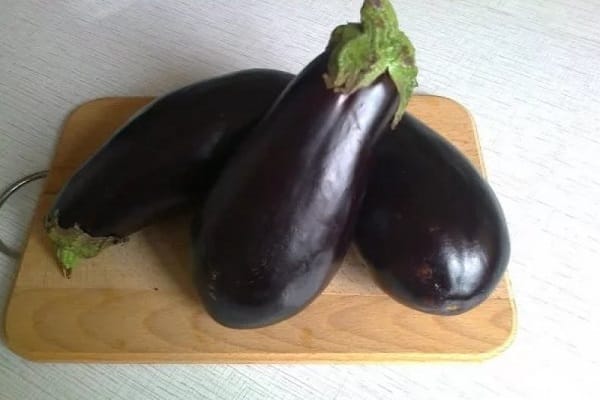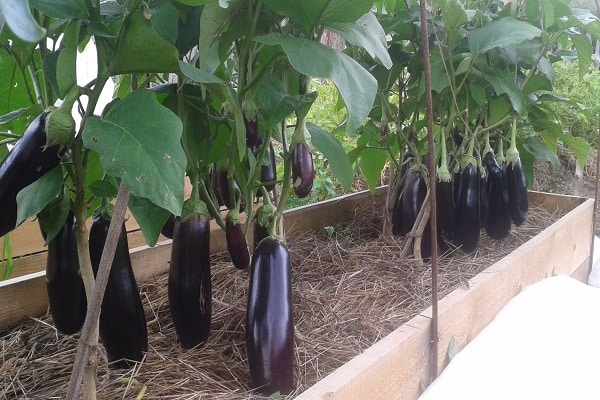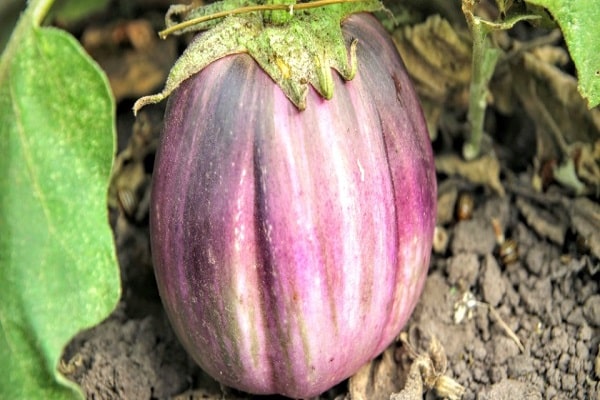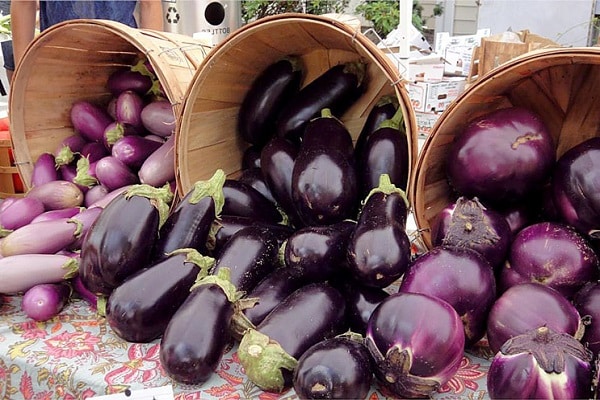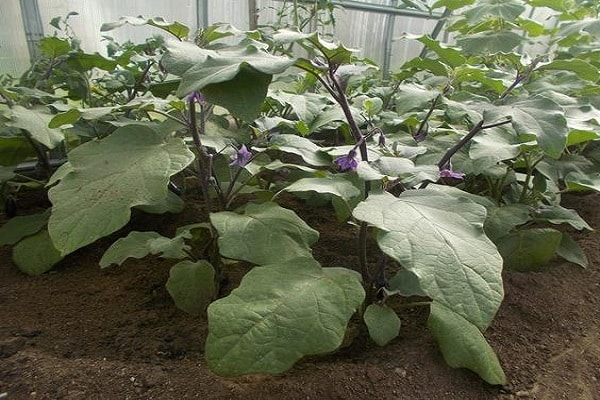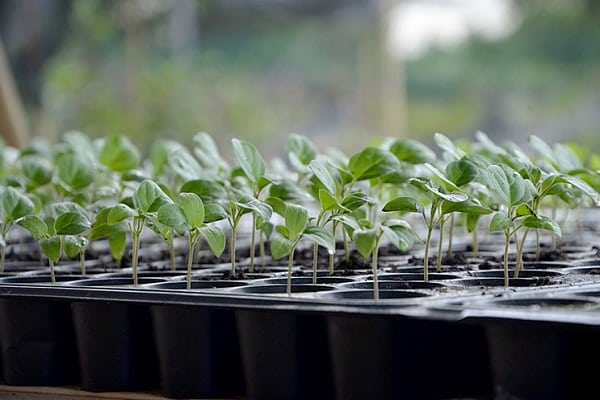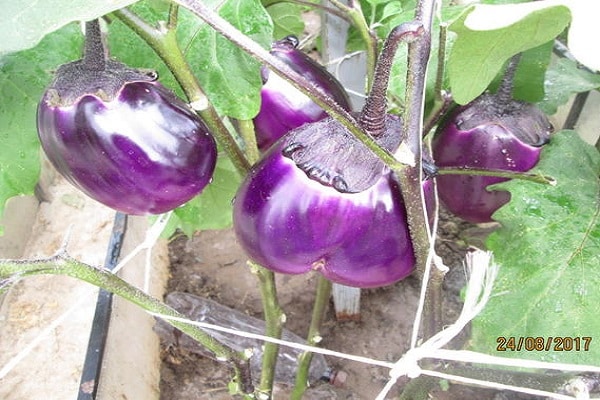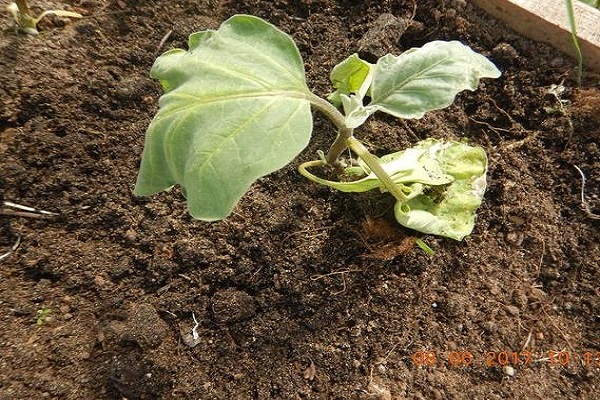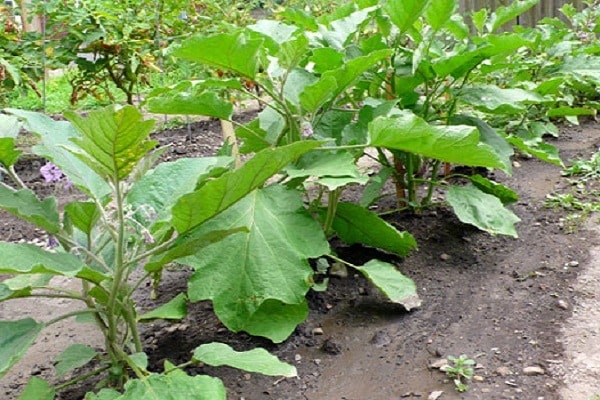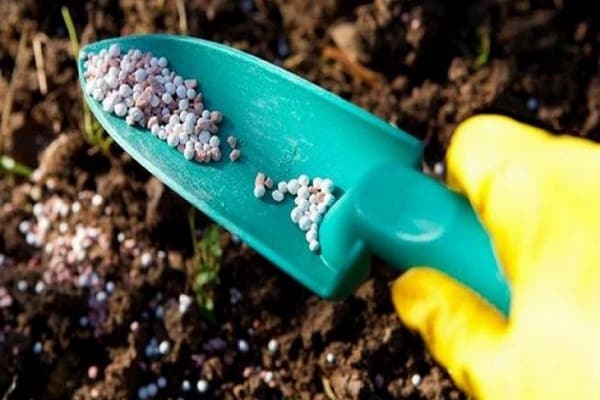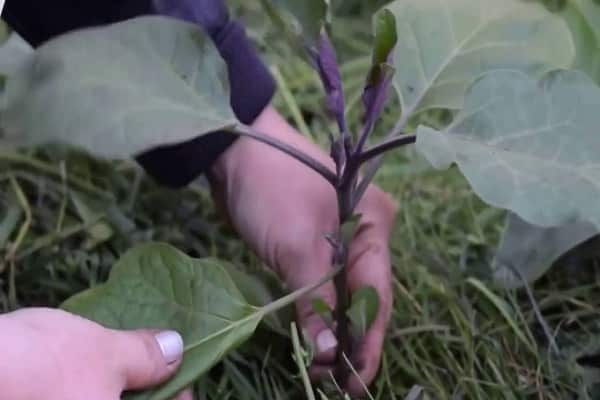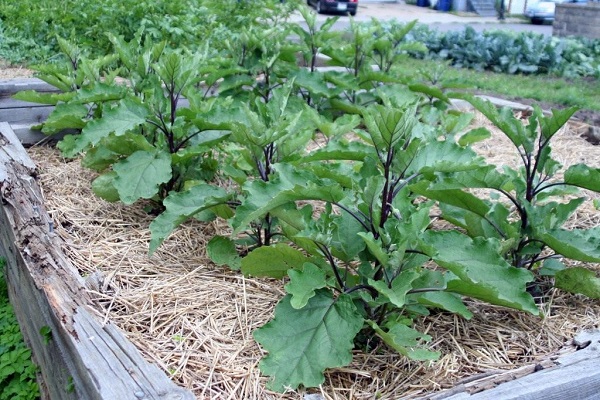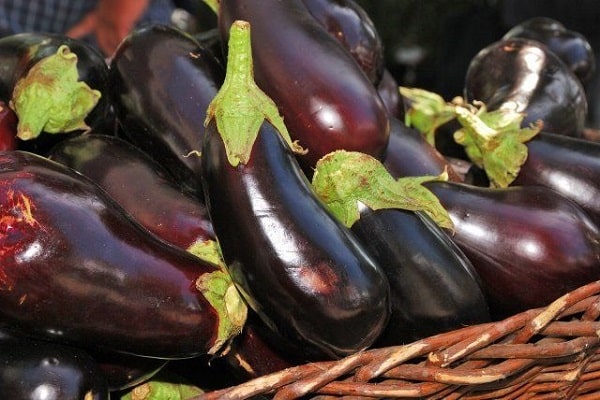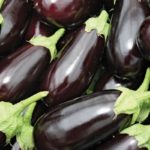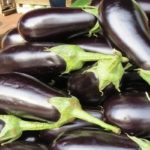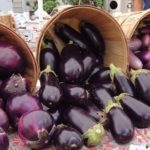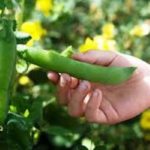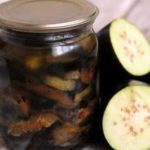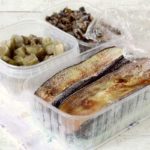Growing some garden crops involves certain difficulties, eggplants being among them. Because of the tall bushes of traditional crop varieties, breeders have developed new compact varieties, including the Carlson eggplant variety. It attracts with its compact bush and small fruits, unusual for “little blue” ones.
Description of the variety and characteristics of the variety
This compact variety has increased productivity.It is considered early ripening, it takes 75 days from planting to fruiting, it is intended for cultivation in greenhouses, in open ground, without film cover, cultivation is impossible.
The size of the annual bush is 65 centimeters. Eggplant of this variety produces fruits of a non-standard round shape, the maximum diameter is 15 centimeters, the color is intense purple. The maximum permissible weight of the fetus is 200-350 grams. The pulp is dense, white-cream, and the seed content is minimal. The variety is valued for its excellent taste, without a bitter taste.
Application: the species is suitable for use in home cooking, beautiful fruits, stuffed, prepared into small rolls, and an excellent side dish for barbecue. In addition, the Black Prince variety is valued by many gardeners due to its lack of bitterness and excellent presentation.
Useful properties of eggplant Black Prince
This variety of eggplant is valued by those who watch their figure, since its fruits contain up to 90% water, a small amount of fat and protein. Also, ripe fruits are distinguished by their content of vitamins valuable for the immune system. 100 grams of eggplant contain 22 kilocalories of energy value.
Eating this vegetable will help prevent heart disease and helps cleanse blood vessels of excess cholesterol. In addition, the purple vegetable improves digestion and restores immune defense against infections.
How to grow a plant
Eggplant Carlson grows well on loamy and sandy loam soils enriched with organic matter. The best options for vegetable precursors would be: hot onions, healthy carrots, pumpkin, legumes. To grow healthy eggplants and reap an excellent harvest, sow selected seeds for seedlings in the first half of March.
Attention! Eggplants do not tolerate picking very well, so each seed is placed in an individual container to be planted in the ground from there.
“Sinenkie” is a heat-loving crop that is afraid of temperature changes and severe drought, therefore, in the middle zone, central and northern regions of Russia, this variety is grown in open ground only under film cover.
Landing dates
Selected seeds are sown for seedlings already in March. But sprouts are planted in an open area at the age of 70 days. This is done after the end of the return frosts, otherwise the annual will die.
Sowing
To ensure strong sprouts, just determining the timing of planting is not enough. At the same time, all the little things and important details are taken into account.
Any high-quality substrate intended for seedlings that has a balanced composition is suitable for sowing. You can also prepare the soil mixture yourself. To do this, take turf, soil, high-quality peat, and a little wood ash. 3 days before the intended sowing of seeds, the soil is treated with a weak solution of manganese to disinfect it from harmful bacteria.
Before sowing, the seeds are also treated to protect against diseases. To strengthen the immune system, the seeds are sprayed with the stimulant Epin. Selected seeds are soaked in water for 3 hours, then 2 seeds are sown in an individual pot, the soil is moistened. Expect germination within 15 days.
Growing seedlings
The optimal temperature for keeping seedlings in the house is 14-17 degrees. This mode builds up the root system. Then it is gradually increased to 22-26 degrees, and at night - 18-22 degrees is enough.
If the window sill is cold, you can make a layer of polystyrene foam to protect the sprouts from freezing.
For comfortable seedling growth, a 12-hour daylight period is required.For this purpose, a phytolamp is used. Water the sprouts once a week, carefully, at the root, so as not to damage the crop.
Picking
The “little blue ones” do not withstand picking well, so gardeners advise abandoning this procedure. It is better to take care of the comfortable development of the plant in advance by planting the seeds in an individual pot.
Care
After planting a vegetable in open ground, high-quality care is required. For comfortable growth and fruiting, young shoots require high-quality watering, periodic weeding, loosening and nutritional feeding.
Watering
In order for the annual plant to receive all the necessary nutrients, it is necessary to follow the basic rules of watering:
- The water used must be settled and warm. When watered with cold water, the vegetable may shed its leaves.
- Eggplants do not tolerate sprinkling, so during rainstorms they are covered with film.
- The frequency of watering is a purely individual matter, so it is important to maintain a balance between excess moisture and its lack.
- The volume of water consumed should not exceed 10-15 liters per square meter.
- Replenishment is applied three times per season.
Weeding and loosening
The vegetable requires periodic weeding and loosening of the soil to ensure proper access of oxygen to the roots. Weeding of weeds is mandatory, since they are carriers of destructive infections to which they are susceptible healthy eggplants.
Fertilizer
“Little blue ones” require fertilizing three times a day. 2 weeks after planting young sprouts, the first feeding of the vegetable crop follows. It is important to maintain a balance of organics and minerals. From organic matter, mullein, good chicken droppings, high-quality rotted manure, and compost will do.
Minerals required are nitrogen, potassium, manganese, and nutrient phosphorus. Remember that fresh manure should not be used, as the nitrogen it contains can slow down plant growth.
Bush formation
After transplantation, bushes are formed from young shoots. Excess shoots are removed 2 times a week. When the bush grows 35 centimeters, they begin to pinch the top. Leave the strongest side shoots, removing all unnecessary shoots and shoots. A strong, developed bush can hold up to 5 stems.
Protection from diseases and pests
In open ground, the “little blue ones” are susceptible to attacks by destructive pests. To destroy mole crickets that devour foliage, special baits are placed. The crop is also susceptible to various diseases, for example, apical and root rot, leaf mosaic, and destructive stolbur. The greatest danger is caused by fungal rot.
Effective insecticides are suitable for the prevention of eggplant diseases. Biological products that do not eliminate diseases instantly are considered more gentle and safe in this matter. Such compositions require long-term application to obtain the desired result.
Harvest and storage
Beautiful fruits begin to be cut when they reach their maturity. You can determine ripeness by lightly pressing on the eggplant - if the skin straightens back, then it’s time to pick the fruit. The main thing is not to overexpose the fruits in the garden, otherwise they will become unsuitable for consumption.

